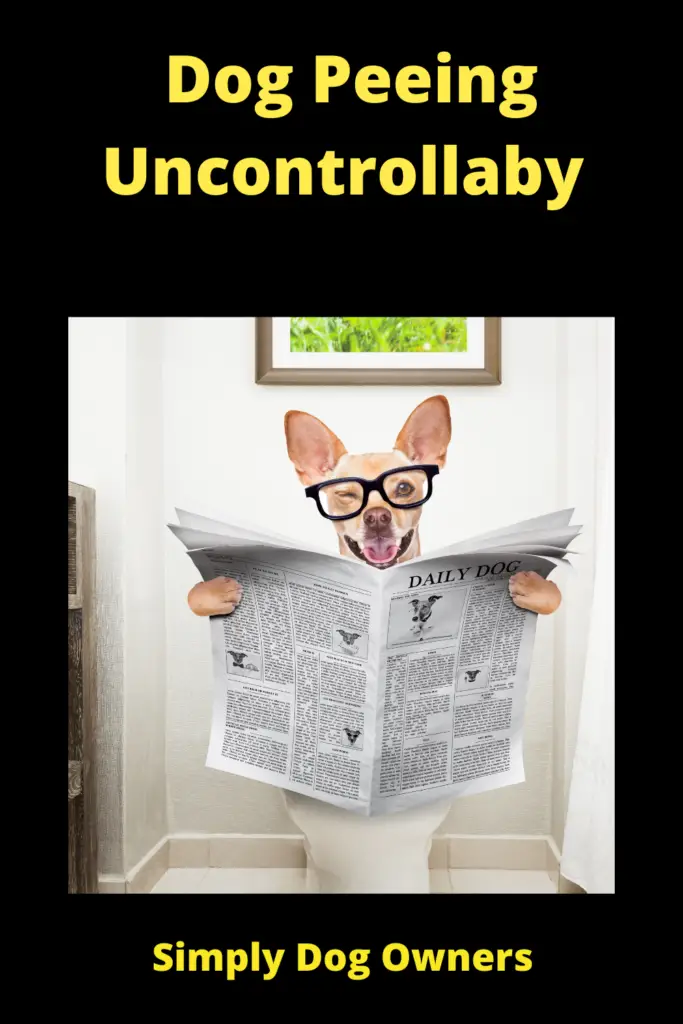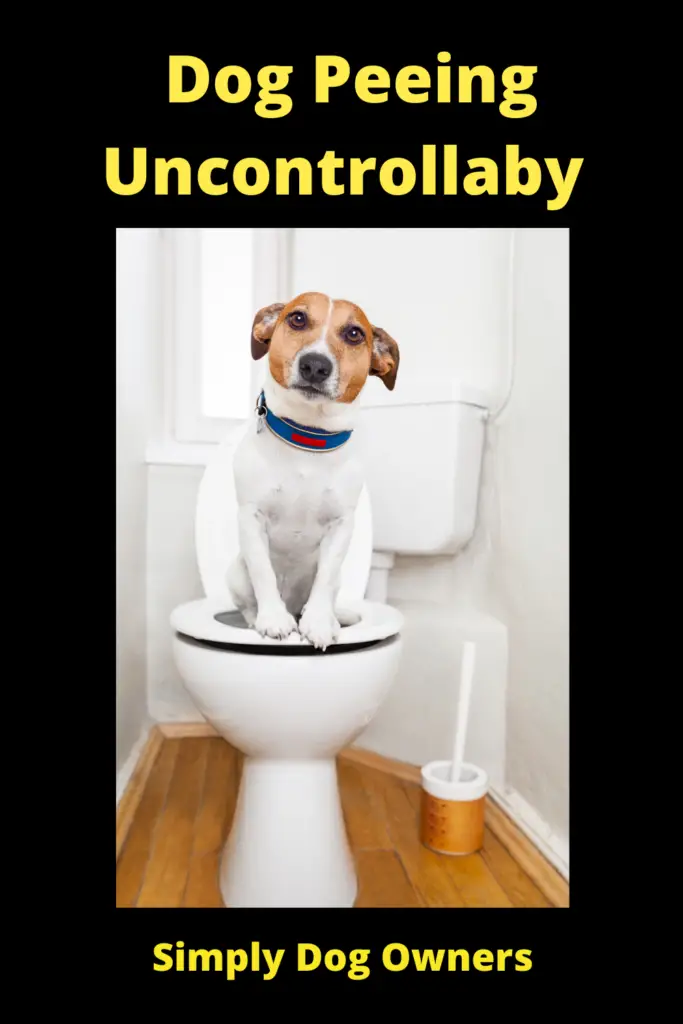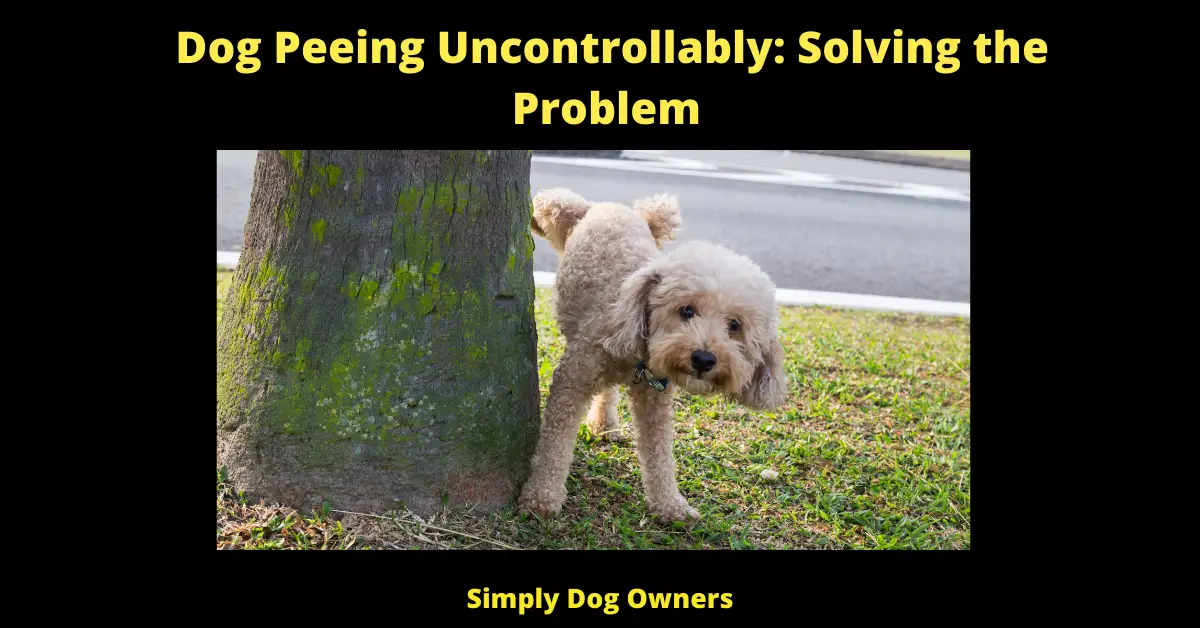As a General Rule Obesity is one of the most often cited explanations. Desexing can also result in a dog’s inability to urinate on his or her own. Among the other, potentially more severe causes of urine incontinence are UTI, Urinary Tract Infection, “spay incontinence.”, In Puppies Weak bladder muscles, and congenital disabilities such as ectopic ureters and other malformations can result in urinary incontinence in puppies. weak urethral sphincter. In some situations, like bladder stones and congenital anomalies, your veterinarian may prescribe surgical intervention.
Dog Peeing Uncontrollably: Solving the Problem
Urinary incontinence or uncontrol peeing occurs when your dog’s bladder is unable to hold its fluids spontaneously. This can occur in various severity levels, ranging from little leaks to huge volumes of pee. Medical problems are generally the cause of incontinence in dogs, and your dog is unlikely to be aware that it is taking on.
Why is my Dog Losing Control of Her Bladder? Or What Causes of Dog Urinate Uncontrollably?
Urinary incontinence can be caused by various causes, some of which are more problematic than others. Obesity is one of the most often cited explanations. Desexing can also result in a dog’s inability to urinate on his or her own. Among the other, potentially more severe causes of urine incontinence are:
- Infection of the urinary tract
- Nerve damage or disturbance in the area of the bladder
- Overactive bladder syndrome
- Brain or spinal cord lesions
- Inflammatory illness
- Tumor
- A birth abnormality that results in underdevelopment of the bladder
- Fluctuating hormone levels
- Issues relating to the psyche or emotions.

What Causes Male Dogs to Pee Uncontrollably?
Your male dog’s sudden inability to stop urinating in the home (or other undesirable locations) might result from a urinary tract infection. Male incontinence is one of the most prevalent causes of excessive urine in men, and it is also one of the most commonly observed health concerns in dogs.
What Causes Female Dogs to Pee Uncontrollably?
Spayed female canines in their middle-aged to elder years are susceptible to a condition known as “spay incontinence.” Several factors might contribute to this type of incontinence, including decreased estrogen levels, which can cause muscle tone in the urethra to diminish. The inability to control one’s bladder in some circumstances may be the source of the problem. Uncontrolled urination due to a weak bladder sphincter is referred to as weak bladder sphincter incontinence. Your veterinarian may refer to it as Urethral Sphincter Mechanism Incompetence (USMI). When it comes to spayed female dogs, it is the most prevalent cause of urine incontinence.
What Causes a Puppy Peeing Uncontrollably?
Weak bladder muscles and congenital disabilities such as ectopic ureters and other malformations can result in urinary incontinence in puppies.
Solutions to Dog Peeing Uncontrollably
Before establishing a diagnosis, your veterinarian should thoroughly evaluate your dog’s medical history and do a physical examination of him. They may do extra tests in order to gather information, such as the following:
- Radiography
- Urine culture
- Urinalysis
- Ultrasound
- Blood tests
These simple tests can assist you, or your vet in determining the core cause of your dog’s illness and the most effective therapy options for him. A urinalysis may reveal that your dog is suffering from a bladder infection. Some further testing, such as blood tests, may be required to rule out underlying reasons such as diabetes or Cushing’s disease, among other things. Urinary stones can be ruled out using radiographs, and tumors or growths in the bladder can be ruled out with ultrasounds. More tests may be required based on the results of these examinations.
If your veterinarian determines that your dog has a bacterial illness, he or she may recommend antibiotics.
If your pup is suffering from a hormonal imbalance, your veterinarian may suggest hormone treatment for him or her. Estrogen supplementation is also a possibility, and your veterinarian may prescribe estrogen-based medicines such as estriol to help you achieve your goals. Even though diethylstilbestrol isn’t commercially accessible in the United States, if your veterinarian prescribes it, a compounding pharmacy may be able to supply it.
A very low dosage of estrogen is delivered by these medicines, which help many dogs with urine incontinence by increasing urethral tone and relieving it. Male dogs suffering from urine incontinence may benefit from the use of testosterone.
The drug phenylpropanolamine is used to treat a weak urethral sphincter. In some situations, like as bladder stones and congenital anomalies, your veterinarian may prescribe surgical intervention. Surgical intervention is necessary in some cases, particularly when medicine alone does not alleviate the issue.
Preventative Measures for Dog Peeing Uncontrollably
Medical therapy is the most effective approach to mitigate the negative health consequences of urine incontinence. Also available measures to minimize the impact of your dog’s incontinence on your house, such as the following:
- Using waterproof pads under their beds
- Using doggy diapers
- Increased frequency of dog walking
- Maintaining good hygiene to avoid skin infection
Urinary incontinence can swiftly progress to the point of becoming an infection.
Ways to clean up after a dog who pees on the floor or carpet
To clean up dog pee on carpets, use a mixture of warm water and dishwashing detergent. The following are simple steps to follow in order to get dog urine out of the carpet:
- Using clean kitchen towels, blot the stain thoroughly – the faster you do this, the better!
- Combine a small amount of detergent (no more than half a teaspoon) and a cup of warm water in a small mixing bowl.
- Fill a spray bottle completely with the solution and saturate the entire affected area with it.
- Kitchen towels must be used to soak up the mixture after it has been scrubbed.
- Thoroughly rinse the area until the stain is no longer visible.
Tips for training your dog not to urinate in inappropriate places
In order to assist you on your puppy-pee-training adventure, you’ll need a few items. Here are a few basics to have on hand to assist you in getting the job done.
- Treats: You’ll want to reward your dog with tons of goodies every time she relieves herself in the proper location, so stock up!
- Supplies: It is a fact that your dog is going to create some messes. It may appear like every time you get home; there is a puddle waiting for you to step into. However, the proper cleaning supplies might assist in resolving the issue. Purchase anything that is enzyme-based to ensure that no fragrance is left behind.
- Patience: It’s easy to become disillusioned when you don’t see any signs of improvement. Getting furious, on the other hand, will only confuse your canine companion. Maintain your composure and only chastise your dog if you find her doing anything wrong.

However, it’s crucial to note that your dog may be peeing indoors due to a medical condition in some instances. Bring the pup in for a checkup to ensure that everything is in working order. Some of the most tried and tested methods for teaching your dog to keep his pee on the grass and away from the carpets are included in the following section. Regardless of the option, you select, remember that consistency is essential!
Dog Training Steps to Reduce Peeing
- Step 1: Get up and get going
Every single day, as soon as your pup wakes up (even if you still have slept in your eyes), take him for a walk!
- STEP 2: Establish a regular schedule
Make sure he gets his breakfast at the same time every morning. Additionally, a bowl of water should be provided. After breakfast, take him outside for 5 to 30 minutes before bringing him back in.
- STEP 3: Keep an eye on things and walk around
Throughout the day, keep an eye out for when your dog goes for a drink. Remember that you should return to the area within 5–30 minutes of drinking the water.
- STEP 4: Evening drill
Canine dinner should be given at the same time every night. Immediately following dinner, take the dog for another walk. Do not leave bowls of water out after dinner in order to reduce the likelihood of a bedtime accident occurring.
What can I give my dog for urinary incontinence?
The Food and Drug Administration (FDA) of the United States has authorized Proin ER (phenylpropanolamine hydrochloride extended-release), a tablet for treating urine incontinence in dogs.
A dog’s urethral sphincter hypotonus, which arises due to the dog’s age and weakened muscles in the urethra, will benefit from the medication.
Natural Remedies for Excessive Urination
Here are some natural remedies to treat excessive urination in dogs:
1. CRANBERRIES
Although it has not been scientifically established, there is every reason to assume that cranberries can be beneficial to your dog’s overall health. They can assist in lowering the pH levels of urine, therefore preventing germs from forming in the bladder.
Keep in mind that you should avoid giving your pet cranberry juice that is excessively sweet in order to prevent weight gain. Some cranberry dog treats may be more appropriate and safer than others.
Consult with your veterinarian to determine whether or not this therapy is appropriate for your pet.
2. APPLE CIDER VINEGAR
Is it fine to use apple cider vinegar on dogs with bladder infections? Yes, this substance, which is both widespread and popular among ill humans, would aid in lowering the pH of your dog’s pee by lowering the acidity of the urine.
This liquid will aid in relieving a bacterial urinary tract infection by neutralizing any harmful germs present in the bladder.
It is recommended that tiny dogs drink or eat their food with a teaspoon of apple cider vinegar added. If you have a large canine friend, you may add one to two teaspoons.
Depending on the severity of the illness, you can use this medication up to twice a day for seven to 10 days at a time.
Remember to offer your dog a dish of water or food that does not include apple cider vinegar if they do not enjoy the vinegar flavor.

3. VITAMIN C
As an alternative, you can give your dog a vitamin C supplement to help acidify his pee. It is so possible to inhibit the growth of germs in the bladder.
Bacteria are less able to attach to the bladder’s walls when they are exposed to an acidic environment, making the growth of the bacteria more challenging in this setting.
A more acidic environment, on the other hand, encourages the development of calcium oxalate crystals. As a result, it is vital to utilize vitamin C, as well as the two products mentioned previously, in moderation.
Inquire with your veterinarian about the appropriate vitamin C dosage for your pet since it will vary depending on their weight and even their food.
Final Thoughts
Urinary incontinence, often known as uncontrollable peeing, happens when your dog’s bladder is unable to contain its own fluids. So, try to check your dog’s proper health and give him/her a good diet.

